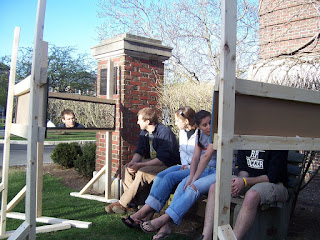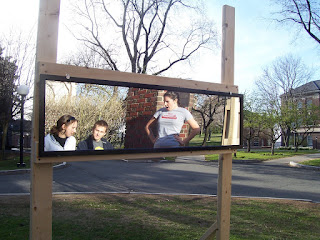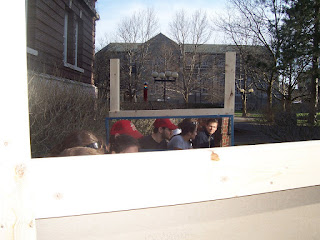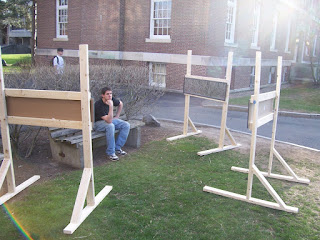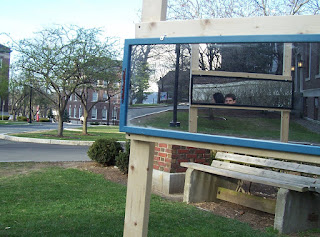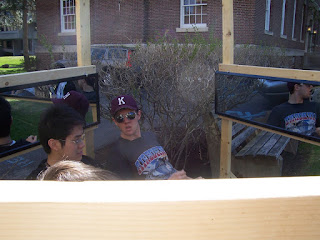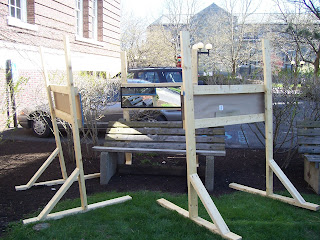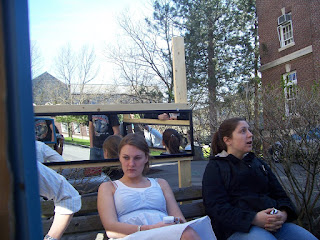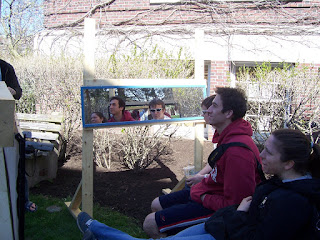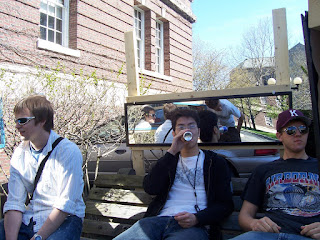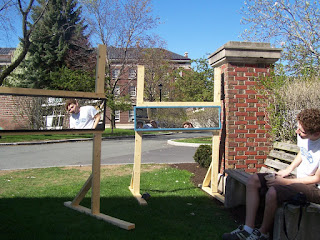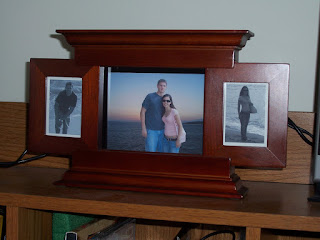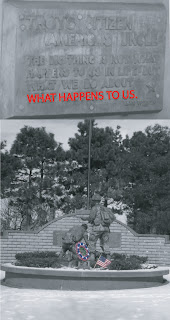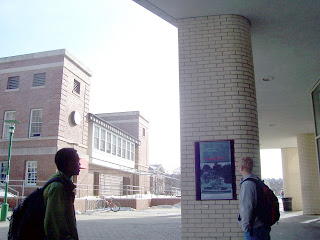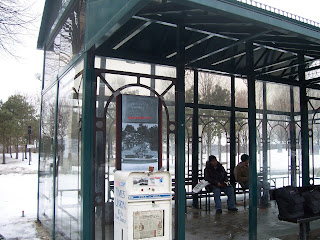The purpose of our project was to enhance a community space and promote interaction using mirrors. We trusted that the mirrors’ ability to create illusions would be interesting to work with. Initially, we talked about placing a tripod of mirrors in the middle of a busy walkway. People walking towards the tripod would be able to see their faces but the body of another person. We were told that although this might be interesting for the individual on his or her own, it would not spark any kind of interaction.
After that, my partner and I decided that we would have to create a space using these mirrors that would draw people in and experience this space with others which could possibly lead to some interaction. We built three stands to hold a 4.5’ x 1’ mirror each where the mirrors would be placed at eye level (about 5’8” center). We then would orient these stands in a semi-enclosed formation. Standing in this space was rather interesting because one could see various angles of him/herself as well as that of the other people in the space. It became very surreal and almost confusing.
At a project review we were told that it was precisely the kind of interaction needed, except it lacked something that would make the participants want to stay and enjoy it a little bit longer. We briefly discussed the idea of building attached benches until we realized that it would be better to use bench areas around campus. Because students are already used to those community spaces, they are more likely to participate in the installation. Placing these stands around seating areas required that the mirrors be lowered to sitting eye level. This was carried out as well.
The installation was set up outside of the
